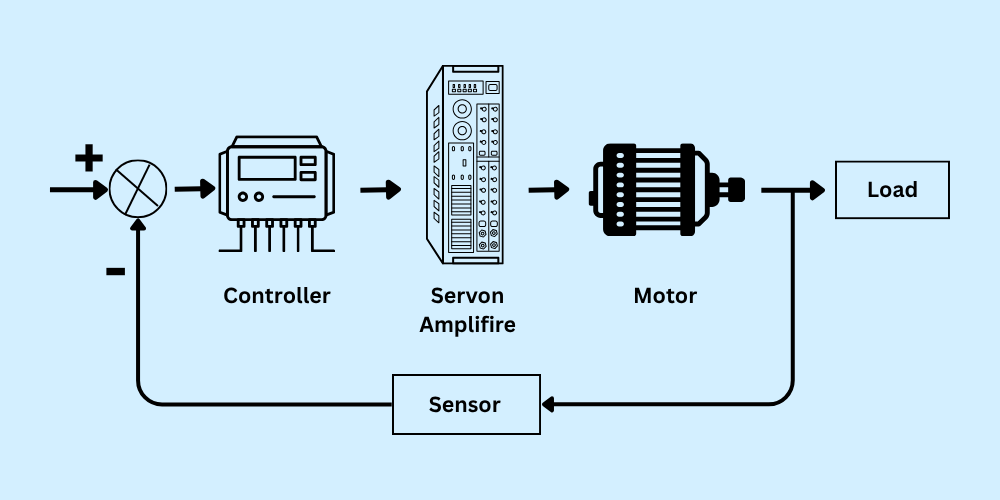Servo Motor Working Principle
A servo motor is widely used in automation, robotics, and CNC systems because of its ability to move with high precision. But what really makes it so accurate? The answer lies in the servo motor working principle, which is based on a closed-loop feedback system. The working principle of a servo motor is simple yet powerful: This ensures the motor exactly follows the instructions it receives, even when load or resistance changes.What Is the Working Principle of a Servo Motor?
It operates on closed-loop control, where the motor’s output (position, speed, or torque) is continuously measured and corrected based on feedback.How It Works – Step by Step
Command Signal Received
A controller (like a PLC or microcontroller) sends a signal to the servo motor driver, telling it the desired position, speed, or angle.
Motor Starts Moving
The driver sends the right amount of voltage and current to the motor to begin the movement.
Encoder/Feedback Sensor Tracks Output
A built-in sensor (typically an encoder) continuously measures the actual shaft position and speed.
Feedback Sent to Controller
The encoder sends real-time data back to the controller or driver.
Error Correction
If there’s any difference between the desired and actual position, the system automatically adjusts the motor’s output to reduce the error.
This process happens in milliseconds, enabling real-time, accurate, and dynamic control.
Key Features Enabled by This Principle
Thanks to this working principle, servo motors offer:
- Precise Position Control (accurate to fractions of a degree)
- Consistent Speed Control (even under load)
- High Torque at Low Speed
- Quick Start/Stop with Minimal Overshoot
Real-World Example
In a robotic arm:
- The controller commands the servo to move 45°
- The servo motor rotates the joint
- The encoder confirms the movement was accurate
- If not, the system corrects the position instantly
That’s servo motor feedback in action.
Final Thoughts
The servo motor working principle is built around one idea: real-time feedback for accurate control. This makes servo motors ideal for applications that demand precision, reliability, and speed.

